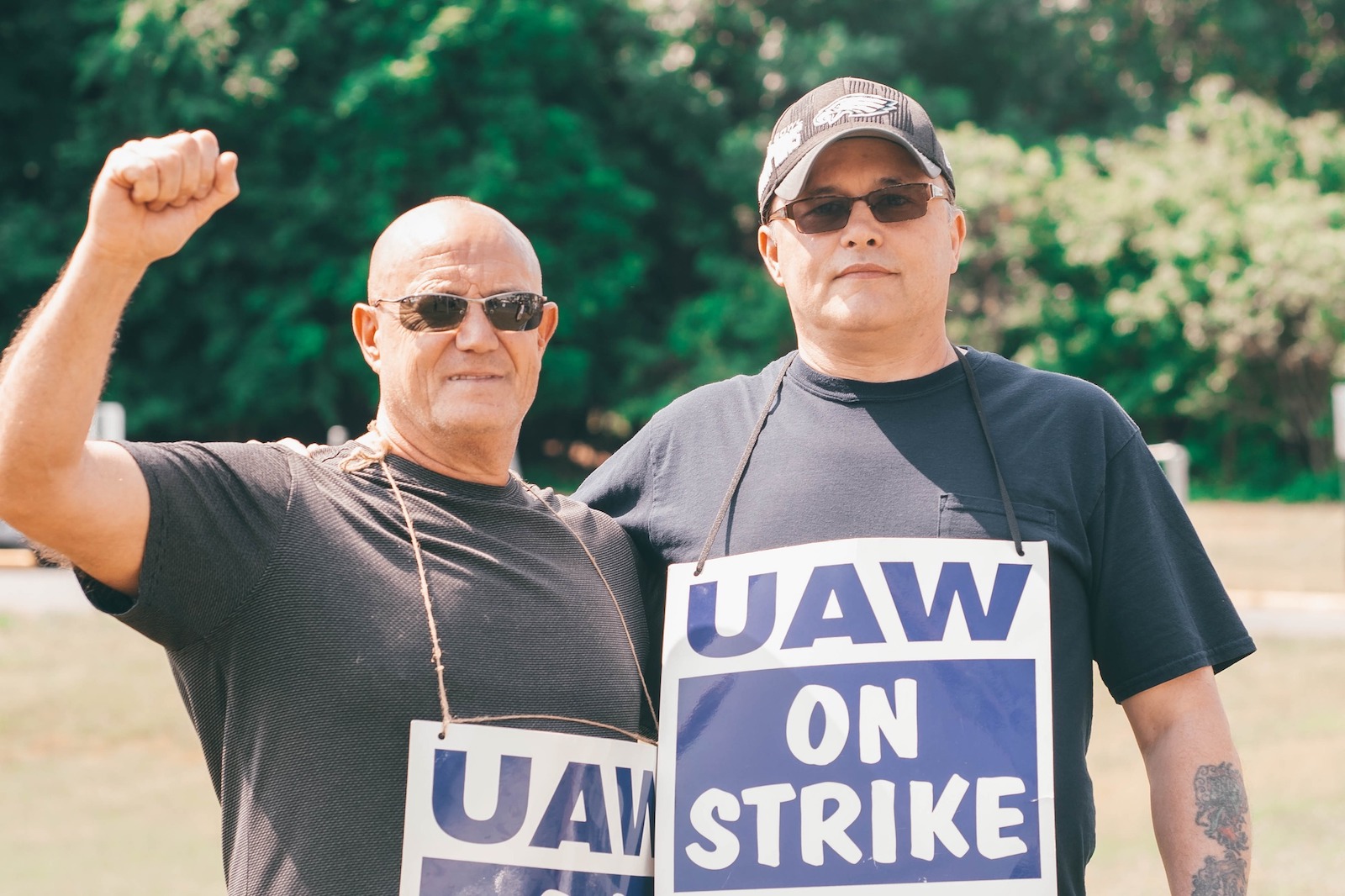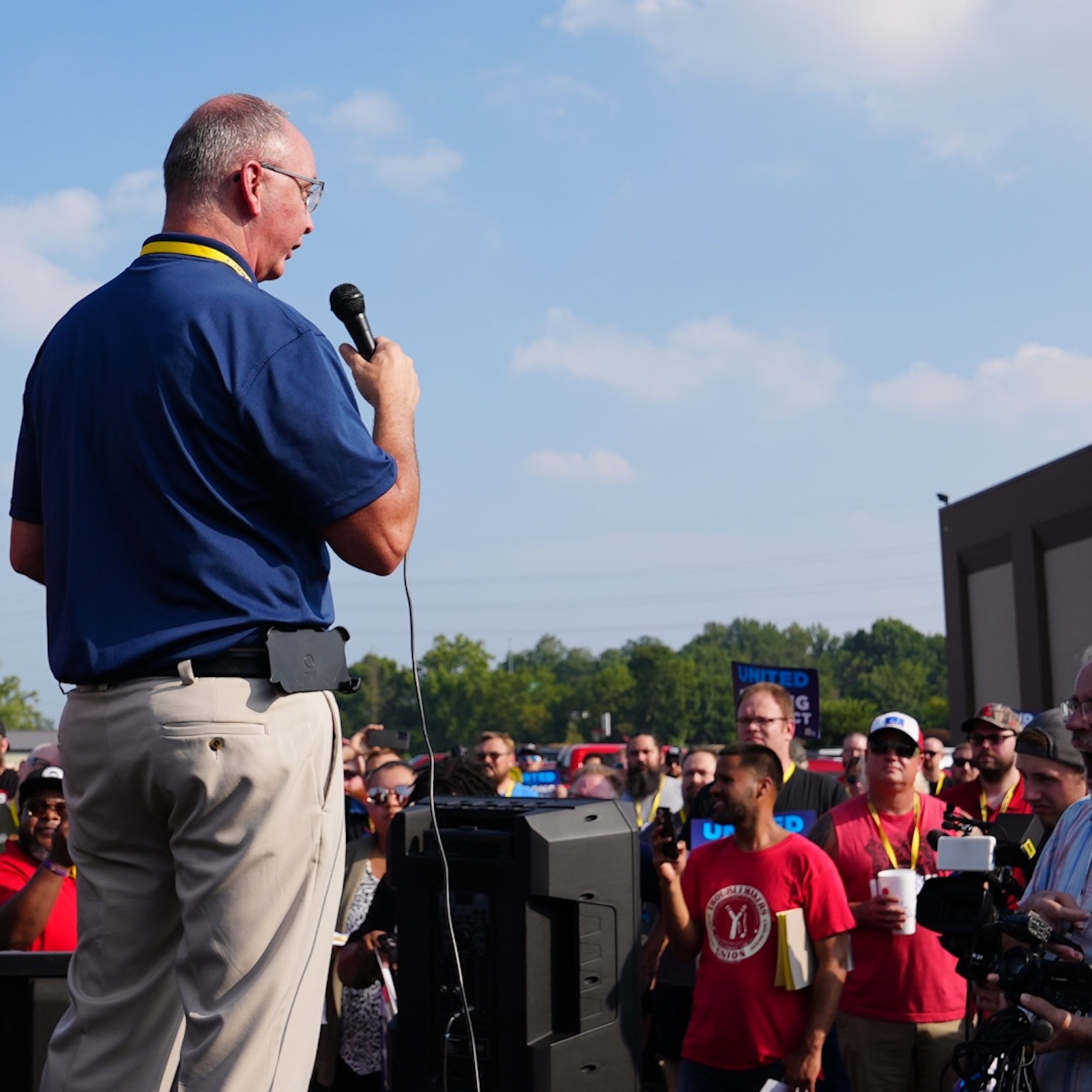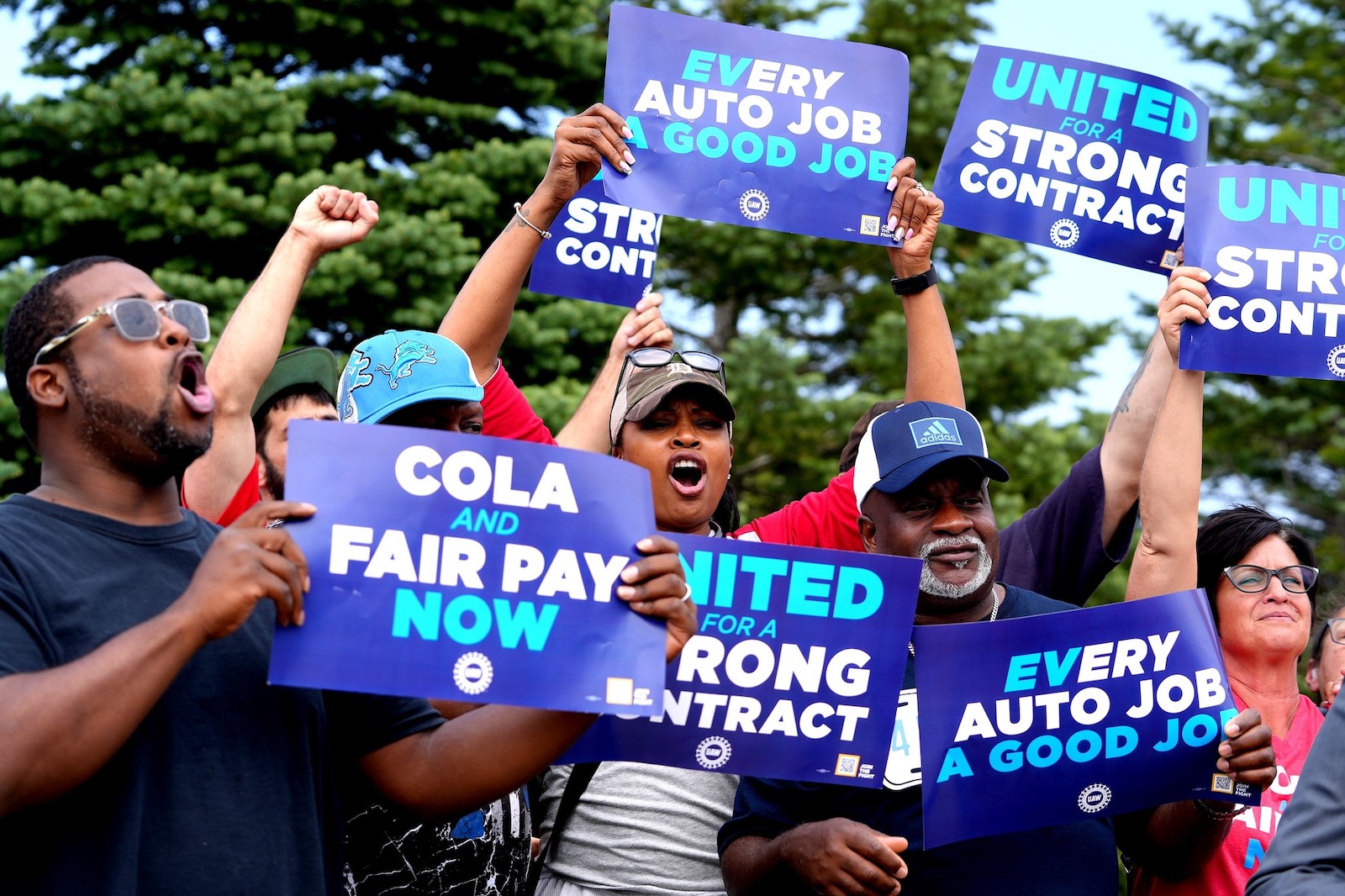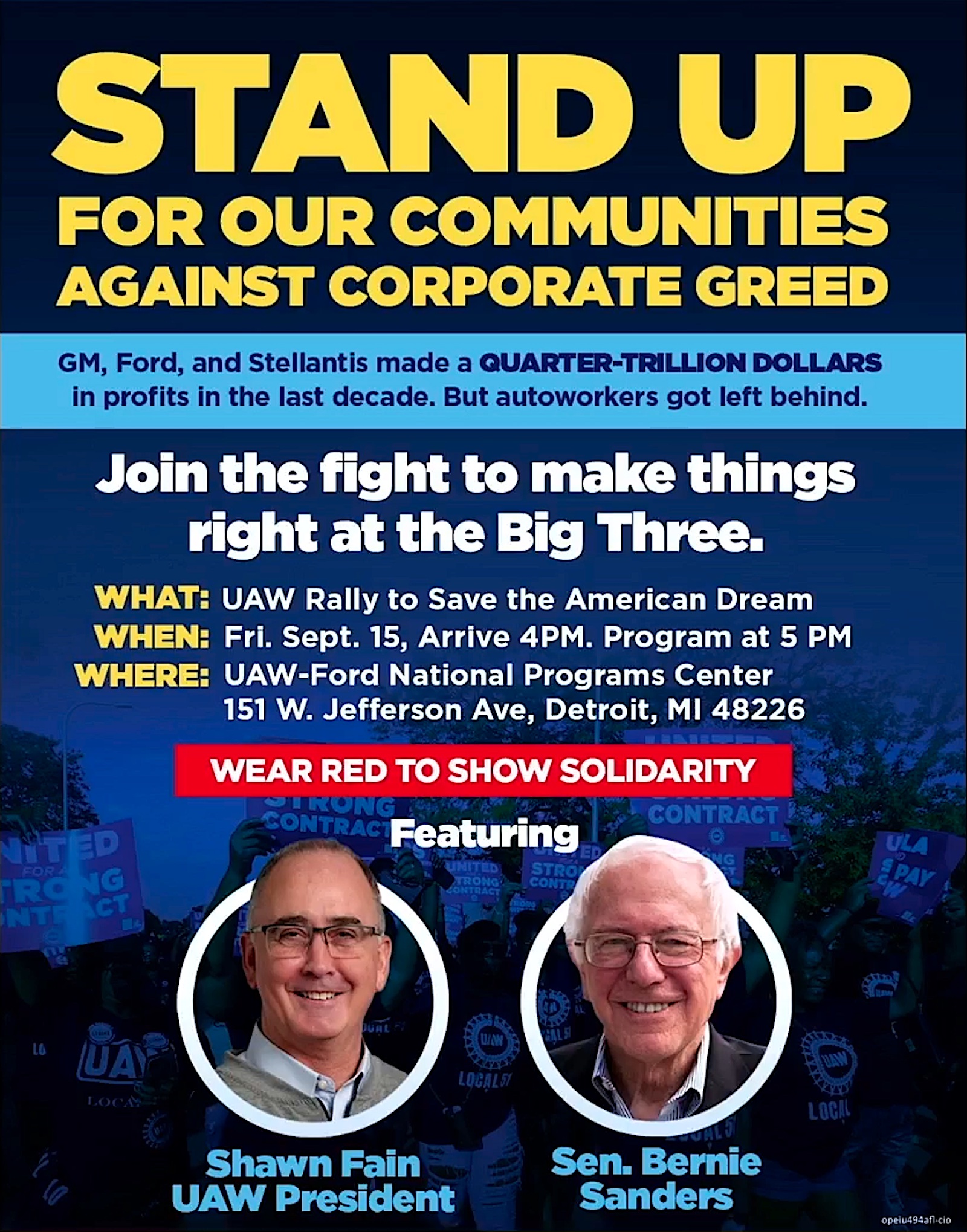The frustration in Jim Farley’s voice was palpable Wednesday night.
Just a day before, the Ford CEO personally delivered — alongside Ford Chairman Bill Ford — a new contract offer to the United Auto Workers Union. Unexpectedly, UAW President Shawn Fain failed to show up for the meeting. And, more than 24 hours later, the union had yet to directly respond to the proposal which Farley described as “the most generous … and fully competitive” in its history.
With the contract deadline rapidly approaching — Thursday at 11:59 p.m. — a strike was looming as an ever-larger likelihood. And some are wondering if a walkout isn’t just a tool Fain could turn to, but an actual part of the UAW president’s gameplan.
“Time left” – but does that matter

A frustrated Jim Farley, Ford CEO, said the company presented an “historic” contract proposal despite being snubbed by UAW chief Shawn Fain.
“We still have time left,” said Farley, in a media scrum at the North American International Auto Show. “But it’s hard to negotiate when you don’t get any feedback.”
There’s always the possibility of a strike when union and management face off. In 2019, UAW members took to the picket lines at General Motors, and stayed there for 40 days, the bitter dispute eventually costing the company about $3.7 billion in lost profits, the automaker later reported.
Strikes are normally just a “tool in the toolbox,” Brian Rothenberg, a former UAW spokesperson, told Headlight.News. But he and other observers question whether Fain now believes that a strike is an essential tool that must be utilized, whether to get the best deal from the Detroit Big Three or as a way to get union members to ratify an eventual contract that might not get them everything they wanted.
700 demands
And the UAW is asking for a lot. It presented the three manufacturers, GM, Ford and Stellantis, with a list of more than 700 demands. Many of those are mundane wants impacting cafeterias and restrooms. But there are the big “asks,” such as wage increases, improved pensions, and a return of the cost-of-living allowances workers gave up during the Great Recession. The UAW would even have the Big Three adopt what is effectively a 32-hour workweek.
During his conversation with reporters on Wednesday, Farley claimed the non-economic issues were resolved weeks ago, something GM and Stellantis echo. But he said Ford has also made major concessions on the union’s big demands. The response? Radio silence.
Fain actually did wind up offering some indication of what he thought about the latest Ford proposal during a Facebook Live appearance Wednesday evening. In simple terms: not much. He had already rejected offers from GM and Stellantis, pointedly tossing them into a trash can.
Situation anything but normal
If anything, Fain focused much of his attention on rallying the troops. Autoworkers, he declared, don’t “back down from a fight.” He then laid out a possible approach he could implement should negotiations fail to reach a conclusion before the contract deadline. That could include what he described as a “stand-up strike.” It would start at just a handful of strategic plants, though Fain could then send workers out at other plants to increase the pressure.
That’s not the only way that this year’s contract talks are decidedly different from those that have come before.
It’s important to recognize that each of the Detroit Big Three actually negotiates its own contract. The union traditionally has picked a “strike target,” the company seen as most likely to meet workers’ demands. At a point close to the deadline, the UAW focuses its efforts on that manufacturer. And, once an agreement is reached, it then presses the other two companies for a similar “pattern” agreement.
All in
This time, there’s no strike target. Just hours from the Thursday deadline the negotiations are going full-tilt at all three companies. In fact, the pressure is so great that GM, Ford and Stellantis bargainers have moved over to the union’s headquarters along the Detroit River.
But there’s a growing sense among many of those that Headlight.News talked to that even meeting all of the union’s demands wouldn’t prevent a walkout. Union members approved a strike vote with 97% in favor of walking out.
“There is an argument to be made that, in order to get the best deal possible, a strike is necessary,” even if it’s a targeted walkout, said Rothenberg.
Reading the tea leaves
But he also acknowledged that Fain seemed determined to strike even before the negotiations actually began “if you read the tea leaves.” Rothenberg pointed to the “confrontational approach” that Fain has relied on ever since he used a Progressive strategy to topple the UAW’s incumbent president early this year in a run-off vote.
Fain began by declaring the Detroit automakers “the enemy.” And, when it came time to return to the bargaining table in July he pointedly refused to participate in the traditional, ceremonial handshakes.
What his long-term strategy might be is uncertain, but Fain certainly wants to reverse the losses the UAW has suffered under recent contracts, notably the concessions it made to help automakers through the Great Recession. It seems all but certain, according to observers, that cost-of-living allowance will return, and that there will be an end to two-tier wage structures, among other wins this round.
Grander plans
But Fain may have grander goals in mind. Historically, the UAW played an outside role in both the labor movement and American politics. It helped create the 40-hour workweek, for one thing. But the union, like others, have lost momentum over recent decades.
Lately, however, American workers have begun pushing back against what they perceive as outsized corporate profits and mega-payouts to CEOs. This has generally been a big year for unions, some achieving major improvements, though the walkouts by screenwriters and actors have yet to play out.
“I think Shawn Fain is showing aspirational intentions,” said Rothenberg. Confronting the highly profitable Detroit automakers and then winning big settlements, the former union official said, could help the UAW itself “retake the mantle” as one of organized labor’s most powerful and influential forces.
Could it backfire?
There is, of course, the possibility that such a strategy could fail.
There are 150,000 UAW workers who could soon be sent out on strike. And, with over 11 indirect jobs for every unionized employee, according to the Alliance for Automotive Innovation, nearly 2 million Americans could quickly feel the impact of a walkout. Some economists have warned this could be the trigger for a long-feared recession if a strike drags on.
“Even a short strike would impact economies throughout Michigan and across the nation,” Patrick Anderson, Anderson Economic Group senior analyst and CEO, told TheMessenger.
Where polls show organized labor gaining more popular backing than it’s seen in years, such a fateful impact could quickly erode that support and turn into a loss for the union movement, even if autoworkers do wind up with richer contracts.






0 Comments